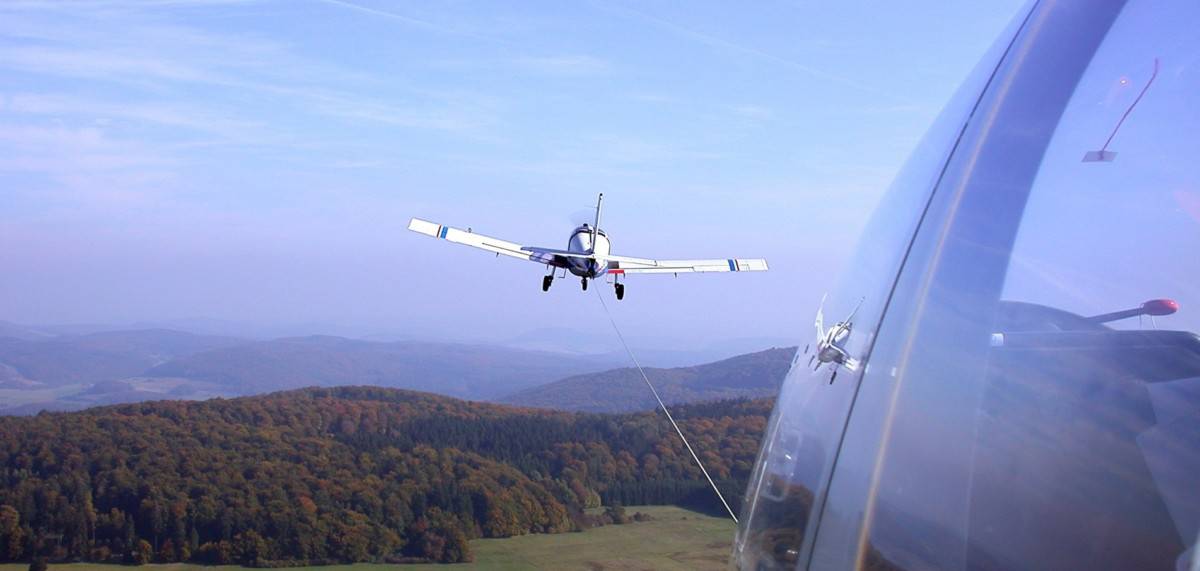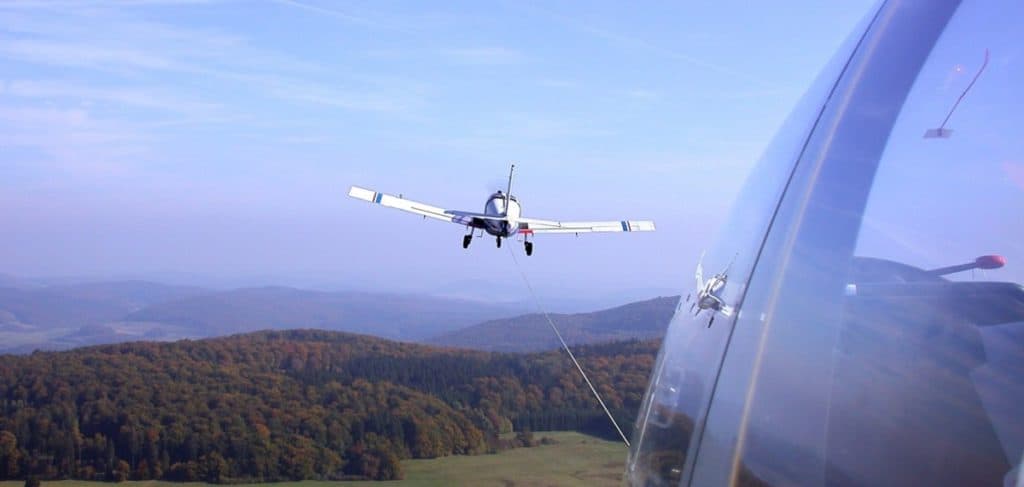
Gliders are as close as a person can get to being a bird. The silence of flight and using moving air currents to stay aloft make this form of aviation pure fun! But to get to this point a glider needs to get airborne, the question is ‘How do they do that?’
Gliders become airborne by being pulled by a ground-mounted winch, towed by an engine-driven airplane, or using an engine/electric-driven propellor mounted onto the glider. Once at height, the glider is either released from its tow cable or shuts down its propeller to allow the silent flight to begin.
Let’s take a look at each of the common methods used to get a glider or sailplane, as they are commonly referred to, into the air.
How Does A Glider Get Airborne?
For a glider to become airborne it needs to get air flowing over its wings to create the required amount of lift to keep it afloat. The exact speed that a glider needs can vary by each model but most will need to reach a speed of around 80-100kph (50-60mph) and a height where thermal air currents can be found.
There Are 3 Main Launch Methods Used:
Winch Launch
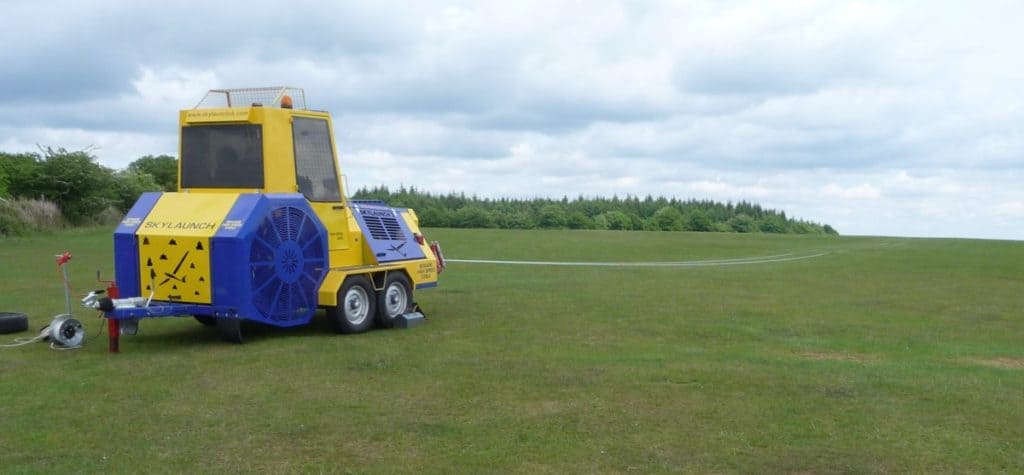
A glider winch is made up of a gas engine or electric motor connected to a large drum with a long steel cable wrapped around it. The winch is made portable so it can be positioned at the end of any runway to allow the glider to be pulled into wind.
Before the launch, the cable is pulled out from the drum to the far end of the runway and connected to the nose hook of the glider. Once the glider pilot is ready, they will call the winch operator via the radio and the winch will begin to rapidly wind up the cable.
This accelerates the glider to the required launch speed at which point the pilot pulls aft on the flight control to raise the nose of the glider to around 40° causing the glider to rapidly climb.
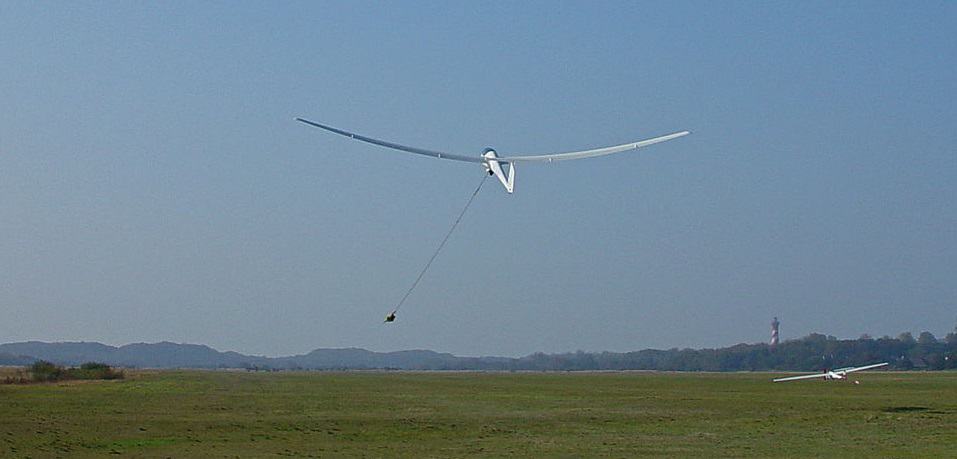
Upon reaching around 500ft – 1,500ft above the ground the pilot will pull on the hook release, the winch cable becomes disconnected and falls back toward the runway under a parachute.
The glider is now airborne and free for the pilot to begin flight.
Although winch launches are an easy way to get a lot of gliders airborne in a fairly short space of time, cheaper, easier to maintain, and easier to operate, it does come with a couple of downsides:
- The rapid acceleration of the glider places large loads on the rope, the tow hook, and the glider. These loads can fatigue the equipment faster which will require often inspection.
- If the rope stops towing halfway through the launch sequence (jammed winch, broken launch cable) it can leave the glider airborne but at a low airspeed which could result in a stall. Training and practice help to minimize the risk of this event.
- Winches are only able to launch the glider to around 500ft – 2,000ft above the ground, depending on the winch. If thermal weather conditions are not favorable then the length of flight may be short. Launching to higher altitudes requires a different launch method.

Join My Newsletter & Get Great Tips, Information and Experiences To Help You Become a Superb Pilot!
Aero Tow
Aero Tow is when a glider is towed into the sky behind an engine-driven airplane. Many of the airplanes used are small tail draggers and can be flown by any pilot who has at least a private pilot certificate (without being paid), 100 hours of flying time, and is endorsed on the aircraft used.
An aero tow is accomplished by lining up the tow aircraft in front of the glider to connect a 100ft – 200ft cable from the back of the tow aircraft to the release hook on the nose of the glider.
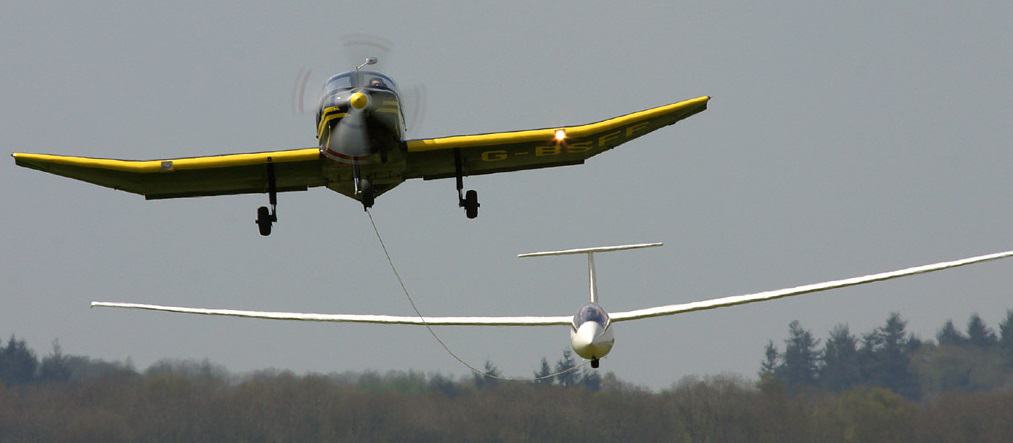
Once connected, the tow aircraft will creep forward to take up the slack in the cable and wait for the signal to begin towing from the glider pilot or the helper who is keeping the glider’s wings off the ground.
Once towing commences, the tow pilot gently increases speed and starts to accelerate. Because of the high-aspect-ratio wings on a glider, the glider will get airborne before the tow plane.
It is now up to the glider pilot to remain around 3ft above the ground until the tow plane becomes airborne to prevent pulling the tow plane’s tail into the air and driving the prop into the ground.
Most tow plane pilots aim to climb out at around 55-60mph for basic training gliders and up to around 75-85mph for high-performance gliders. The airspeed required will have been ascertained before takeoff.
The tow pilot will now climb using this set airspeed to the altitude that was requested by the glider pilot. Aero tows are a great way to get gliders high into the air, but the time it takes to get there could be considerable.
Once at the predetermined altitude, the glider pilot will release the tow hook and bank to the right while the tow pilot will bank left and begin a descent back to the airfield ready for the next launch.
Tow planes are a great way to get gliders to high altitude but they also have a few downsides:
- Increased cost to the club for buying, maintaining, and running an engine-driven fixed-wing airplane
- Having a qualified pilot to fly the tow aircraft available when the glider pilots wish to fly
- Increased risk of towing aircraft in busy airspace on perfect flying condition days
Self-Propelled Gliders
Gliders can be built with on-board self-propelling units to take off like a regular airplane and then turn off and stow the propulsion system when ready to begin gliding.
Self-propelled gliders come in three main types:
- Nose-mounted propeller
- Stowable fuselage-mounted propeller
- Stowable fuselage-mounted jet engine
Nose-Mounted Propeller
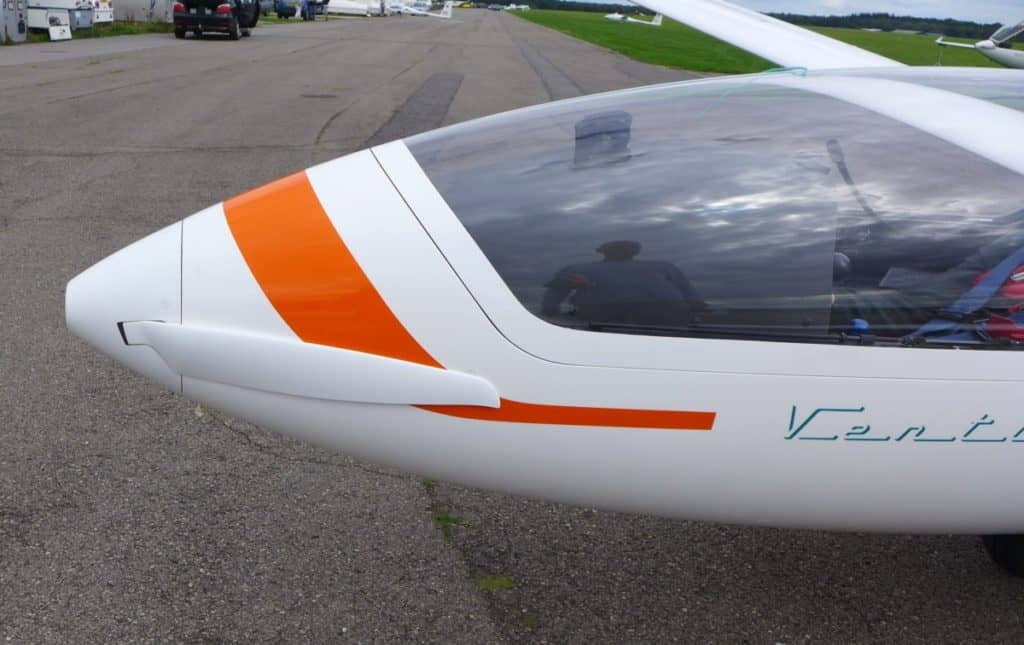
Gliders can be fitted with an electrically-driven nose-mounted propeller. Powered by batteries, the pilot can turn on the propeller to launch the glider into the air and climb to the desired altitude.
The propeller blades are spring-loaded to ensure they stay flat to the fuselage when not in use to prevent them from creating drag while in flight and being damaged during landing.
When the pilot activates the electrical motor, centrifugal force forces the blades outwards to form a typical airplane propeller and create thrust.
Stowable Fuselage-Mounted Propeller
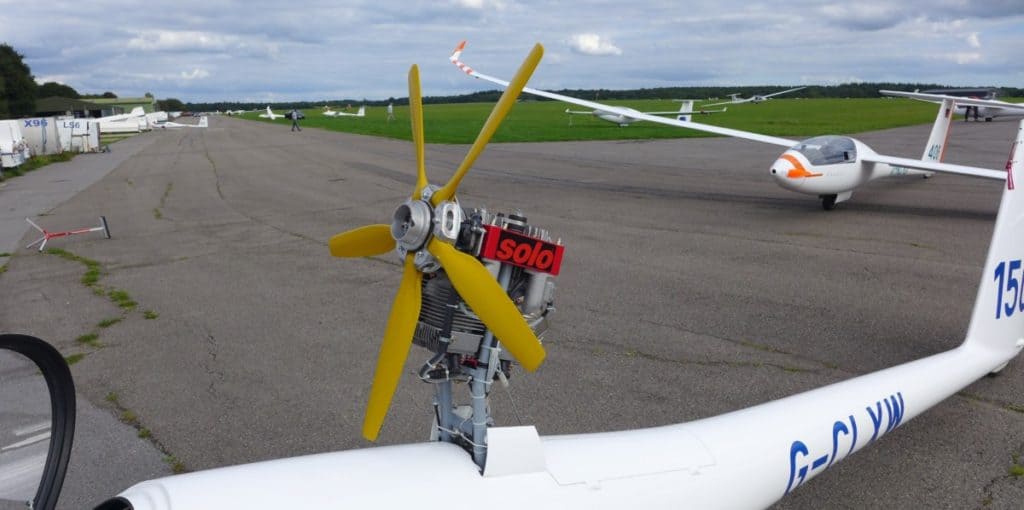
Some gliders come with an integrated 2-stroke gasoline-powered propeller unit that can be retracted and stowed into the fuselage when not being used.
When the pilot wishes to take off, they extend the propulsion unit and fire up the engine to drive the propellor. This thrust will power the glider into the air and up to the desired altitude.
Once at the desired altitude, the pilot will shut off the engine, allowing the propellor to stop, then retract it into the fuselage.
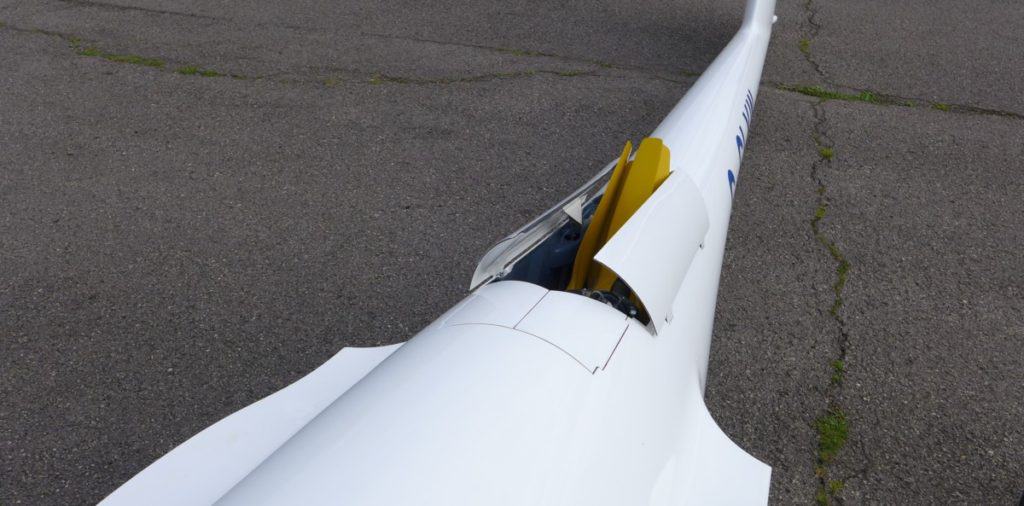
Each propeller blade is free to fold so the unit can be stored in a small an area as possible. Just like the nose-mounted propeller, centrifugal force keeps the propeller blades in position when the engine is running.
Stowable Fuselage-Mounted Jet Engine
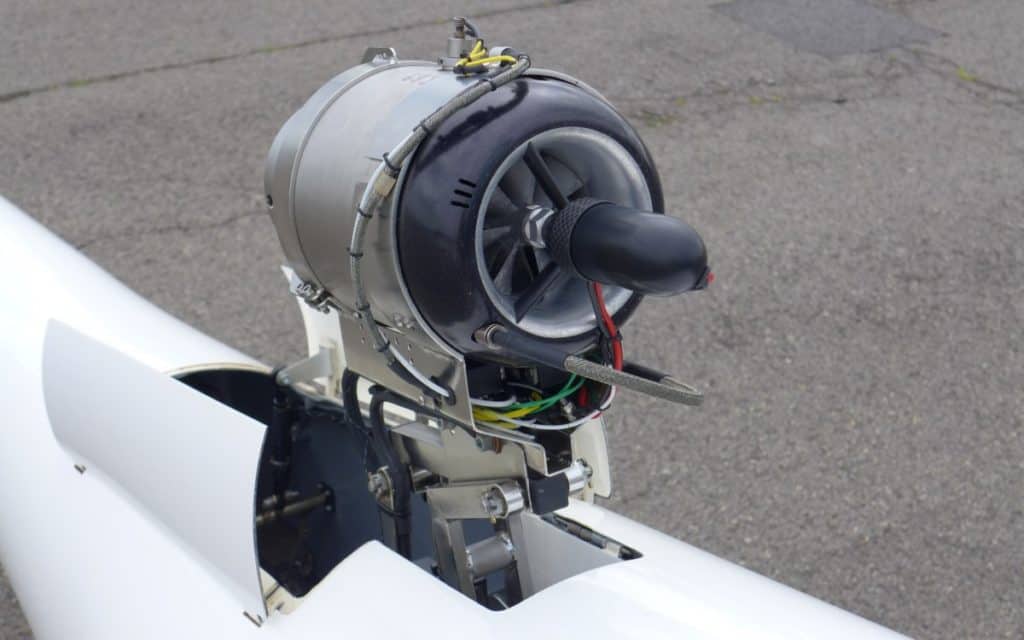
We have all seen how jet engines launch gigantic airliners into the air, well miniature versions can be fitted to retractable mechanisms to power the glider to become airborne.
Although not as popular, these small engines have a compact footprint allowing them to be installed in even the smallest gliders where weight and space are a premium.
Just as the propeller unit, these engines will be retracted into the fuselage when not in use.
To Finish
Gliders need to be towed or propelled by their own onboard system to get them into the air. Each way has its pros and cons but all of the techniques mentioned are the most popular ways used all over the world on a daily basis.
Gliders can be simple or complex and once they have reached their required altitude the silent flight can begin, leading to flights of many hours and hundreds of miles to be flown under the right weather conditions and pilot skill.
Further Reading
If you found this article interesting and would like to keep reading, I highly recommend the following articles from my blog:

